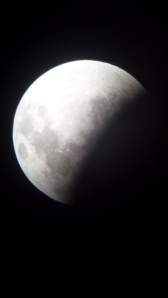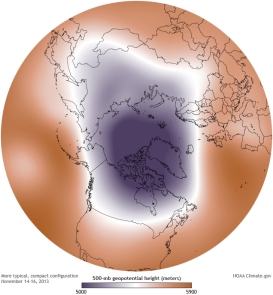I took the telescope out during April’s lunar eclipse…
… and had a really amazing time. At first it was just the mosquitoes, the clouds, a cool drink, and myself, but after a while people started pouring out of their apartments to see the show.
So of course I invited them all over to watch through the telescope. By the end about 10 strangers were standing around watching the bloodmoon and discussing human history, space, science, etc.
Imagine what it would be like not knowing anything about the true nature of eclipses and, one seemingly random and unpredicted night, the full moon started disappearing- and then turned blood red. What a sign!
Luckily, we live in a time where humans have walked on the moon, so we do know a bit about it. So, why does the moon turn red?
Well, what color is the sky? (class shouts blue!) If the sky was blue, then how come images of the Earth from space aren’t of a blue ball? Or we don’t normally see a blue moon and blue stars? The sky appears blue because our atmosphere scatters blue wavelengths of light more than other wavelengths of light. When the sun is low in the sky, like during a sunset, the light reaching your eyes has passed through much more atmosphere than when the sun is high in the sky, causing most of the blue light to be scattered out already (for people who are experiencing noon elsewhere). So all that’s left in the light when it reaches your eyes during a sunset are the yellows and reds.
During a lunar eclipse the moon is behind the Earth, with the sun on the other side. The light reaching the moon has passed through the edges of the Earth’s atmosphere, causing a projection of what we see in a sunset to fall on the face of the moon. It’s the ultimate sunset!
Open question: Alright, after reading some Wikipedia articles on diffuse sky radiation and the like… I have a question. If our atmosphere scatters blue light, and images of the Earth from space are possible because sunlight is being reflected off of the Earth’s surface and into a camera, how come the Earth doesn’t appear reddish? You know, since the sunlight has passed through the atmosphere twice (down to Earth and back up to space?)
p.s. here’s a paper from 1868 “On the blue colour of the sky, and the polarization of light“









